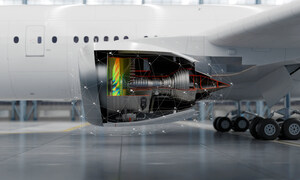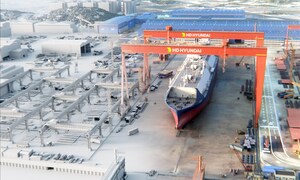BUFFALO GROVE, Ill., June 25, 2012 /PRNewswire/ -- Siemens Building Technologies Division announced today the availability of a new study "A Path to Achieving Higher Building Performance," that reveals the vast majority of public and private commercial buildings in the U.S. have a long way to go on the path to sustainable and energy-efficient operations. Conducted in collaboration with McGraw-Hill Construction, the study explored trends in specific operational improvements, ongoing operational services and renovations at organizations in the office, healthcare and higher education sectors.
(Logo: http://photos.prnewswire.com/prnh/20070904/SIEMENSLOGO )
"We recognize that greater adoption of energy efficiency and sustainability practices within buildings is critical to address our nation's challenges in the areas of infrastructure, climate change and continued economic vibrancy," said Brad Haeberle, senior director and head of Building Automation Service for Siemens Building Technologies Division. "Fortunately, our research finds that despite continued economic uncertainty, our nation's business and industry leaders are rising to the challenge and making high-performing buildings a reality."
According to Siemens and McGraw-Hill the study provides the marketplace with a valuable guide to help all building owners assess specific building improvements and retrofits to achieve high levels of building performance. To obtain the complete study click here.
The study focused on improvements and services conducted or initiated in the past three years and those planned for the next three years. Interviews were conducted with 150 building portfolio owners, including 50 interviews in each of three sectors.
"Owners are investing in their buildings for a variety of reasons. In particular, healthcare and higher education owners are influenced by higher satisfaction and the well-being of building occupants," said Harvey M. Bernstein, vice president Market Insights & Alliances McGraw-Hill Construction. "These investments reported by owners indicate that there are opportunities in the market for product manufacturers, service providers and others that can offer the technologies and expertise to help owners move their buildings along the path to higher performance."
Additional areas of exploration included the stages building owners go through to improve building performance, the stages at which a particular improvement or service is initiated, drivers and obstacles of engaging in improvement efforts, and metrics for measuring the effectiveness of improvements. These stages range from buildings with little to no improvements (stage 1) to buildings that had been transformed to high performance through significant investment (stage 4).
"A Path to Achieving Higher Building Performance," reveals that office, healthcare and higher education buildings in the U.S. span these categories, with the bulk (nearly two thirds) grouped in the middle two stages. In addition to placing their buildings along this spectrum, owners also shared the kinds of activities, drivers and plans they have for those different buildings. Some key results:
- Owners report significant business benefits from their investments in high performance building improvements, including ROI increases of 13 percent for office buildings, 18 percent for healthcare facilities and 15 percent for higher education buildings.
- Despite the economy, owners are investing in their buildings, and they plan to continue to do so. In particular, owners are increasing investment in operational activities that do not require significant up-front expense in order to yield benefits. For example, owners report one-year operating cost savings of 8–11 percent from their efforts.
- It is not just about energy and operating cost savings. Owners are investing in their buildings for a variety of reasons. In particular, healthcare and higher education owners are influenced by higher satisfaction and the well-being of building occupants.
Siemens Infrastructure & Cities Sector, with approximately 87,000 employees worldwide, offers sustainable technologies for metropolitan areas and their infrastructures. Its offerings include complete traffic and transportation systems, intelligent logistics, efficient energy supply, environmentally compatible building technologies, modernization of the way power is transmitted and distributed, and smart consumption of electricity. The sector is comprised of the Rail Systems, Mobility and Logistics, Low and Medium Voltage, Smart Grid and Building Technologies Divisions as well as Osram Sylvania. For more information, visit www.usa.siemens.com/infrastructure-cities
The Siemens Building Technologies Division is the world's market leader for safe and energy efficient buildings ("green buildings") and infrastructures. As a service provider, system integrator and product vendor, Building Technologies has offerings for building automation, heating, ventilation and air conditioning (HVAC), fire protection and security. For more information, visit http://www.usa.siemens.com/buildingtechnologies
SOURCE Siemens
WANT YOUR COMPANY'S NEWS FEATURED ON PRNEWSWIRE.COM?
Newsrooms &
Influencers
Digital Media
Outlets
Journalists
Opted In






Share this article